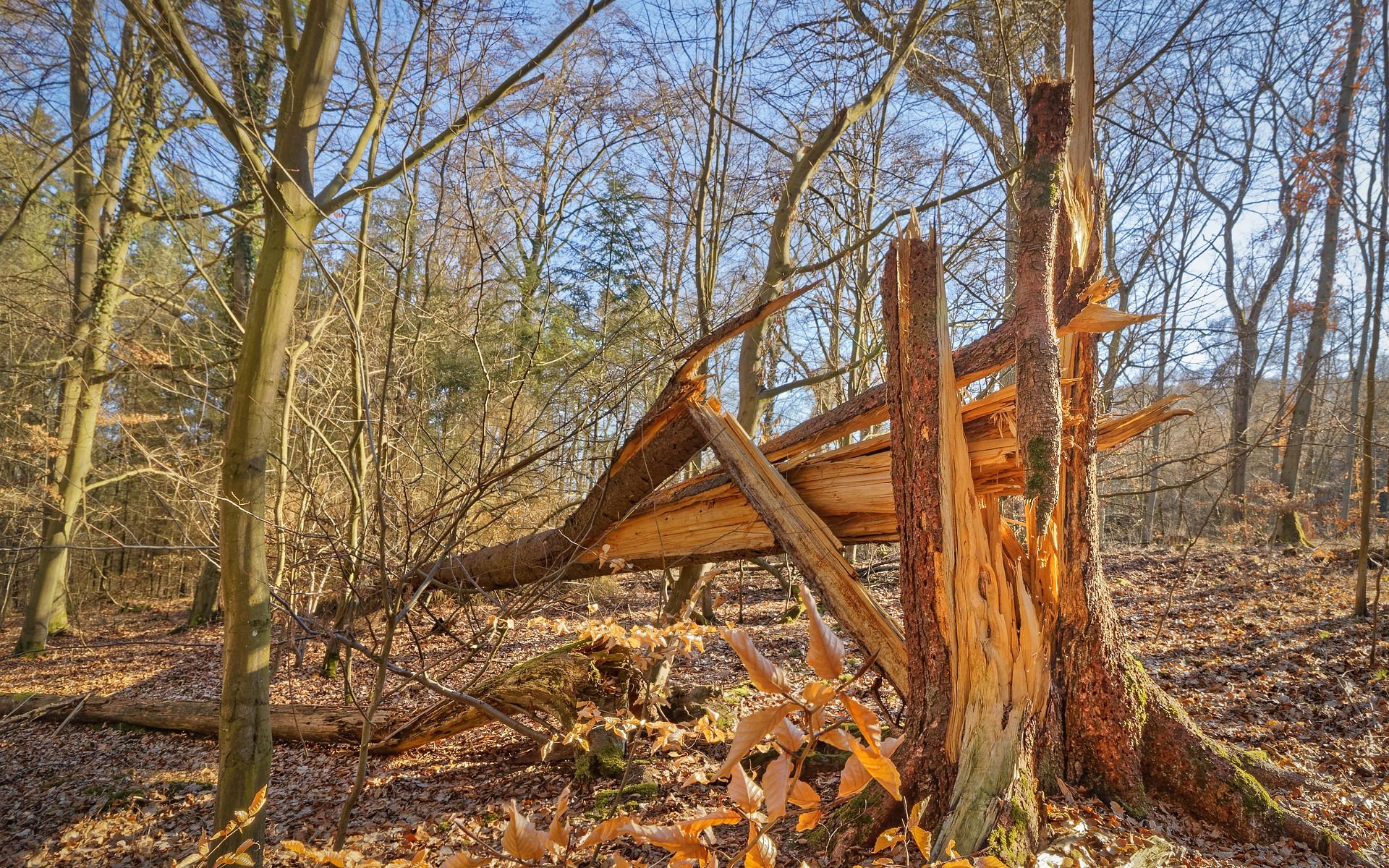
Use Common Sense and These Tips to Stay Safe
KNOXVILLE, Tenn. – Springtime in Tennessee often comes with severe weather that can cause property damage. University of Tennessee Institute of Agriculture professor Chris Graves advises following common-sense safety practices while cleaning debris.
“Every year, I coordinate federal chainsaw safety training for the Department of Forestry, Wildlife and Fisheries, and teach this material as well. Chainsaws are specialty tools that, if mishandled or used incorrectly, can seriously injure the user or someone nearby,” says the expert. “These protocols will be crucial to ensuring that homeowners and others stay safe.”
– Recognize that not only is the chainsaw operator at risk, others in the vicinity can be injured by limbs or debris thrown by trees as they fall. Everyone in the area must wear proper clothing and safety gear.
– Everyone in the area must always wear an approved hard hat. Even small debris striking you in the head can cause traumatic brain injuries. It may also momentarily disorient you and cause you to be injured by the saw or other objects.
– Wear proper footwear, which includes sturdy shoes or boots with non-slip soles. Steel-toe safety shoes or boots are recommended. If these are properly sized, you won’t feel the toe cap. The toe cap withstands more than 1,500 pounds, so imagine what your foot would look like without its protection.
– Eye protection is vital. You are at risk of chips from the saw as well as twigs and other objects. Consider a mesh face shield for your hard hat because it will not fog up like goggles and is comfortable for those who wear glasses.
– Hearing protection, whether ear plugs or muffs, prevents noise-induced hearing loss. A chainsaw is loud enough to cause hearing damage in just a few minutes, even for bystanders. Hearing protection also reduces the saw noise to a level safe for your ears, and you can actually better hear unusual sounds and warnings if your inner ear is not overwhelmed.
– Gloves with leather palms can absorb some of the vibration from the saw. They can also help protect you from scrapes and abrasions from your surroundings. Gloves with Kevlar padding provide even more protection from cuts.
– Kevlar chaps prevent cuts and scrapes from limbs, thorns, etc., and they are designed to protect you from incidental contact with the moving saw chain. They cannot provide absolute protection from a saw under full throttle, but many cuts to the legs are from a coasting chain after a cut is completed or situations such as stumbling or falling.
– Make sure the saw is in good working order and properly sharpened. Dull saws slow you down and if you get frustrated you might mistakes. Have a spare chain and tools with you so you can quickly make repairs and safely return to work.
– What dulls a saw faster than anything else? Hitting a steel wedge or other hard objects. Plastic wedges are inexpensive and can prevent costly downtime, yet are strong enough for serious blows with a heavy sledge hammer.
Graves adds that there are many educational tutorials on YouTube from chainsaw manufacturers, but cautions that all material should be evaluated as a trusted source before implementing advice. “There is no safety guarantee when working with machinery or heavy tools, but safety should always be the number one goal,” says Graves.
For those who are clearing debris after a storm, follow these guidelines as well:
– Treat every downed power line as if it is ‘live.’ Stay away and let the power company crews remove limbs and trees from power lines. Never touch a power line with anything, nor touch anything that may be in contact with the power line. Remember, the lines are uninsulated and may be over 14,000 volts and capable of currents in hundreds of amps. Electricity can arc a considerable distance and travel through trees to electrocute you. Moving a power line with a wooden pole is very dangerous, because the pole will conduct electricity. Linemen use specially designed tools and safety gear, and have been properly trained to safely handle power lines.
– Broken limbs hanging in trees are nicknamed widowmakers. Don’t work underneath them. They can fall without warning. Even small limbs can cause very serious or fatal injuries.
– Downed or damaged trees and limbs can be under very high stresses from being bent. Use extreme caution and relieve the stress with a series of shallow cuts to the outside of the bend before attempting a cut all the way through. Failure to do this can cause the limb or trunk to snap violently.
– Never attempt to remove a lodged tree by cutting the tree it is leaning against! The results are often fatal. Lodged trees are best removed by professionals using a tractor or winch to pull it down in relative safety.
– Never turn your back on a falling tree! Have at least two clear routes at angles opposite to the direction the tree is supposed to fall. Keep your eyes on the tree so you can alter your course should something unexpected happen.
Through its land-grant mission of research, teaching and extension, the University of Tennessee Institute of Agriculture touches lives and provides Real. Life. Solutions. utia.tennessee.edu.